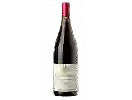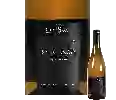
Domaine des CognettesSauvignon
This wine generally goes well with vegetarian, rich fish (salmon, tuna etc) or shellfish.
Wine flavors and olphactive analysis
On the nose the Sauvignon of Domaine des Cognettes in the region of Loire Valley often reveals types of flavors of green apple, grass or vegetal and sometimes also flavors of tree fruit.
Food and wine pairings with Sauvignon
Pairings that work perfectly with Sauvignon
Original food and wine pairings with Sauvignon
The Sauvignon of Domaine des Cognettes matches generally quite well with dishes of rich fish (salmon, tuna etc), shellfish or vegetarian such as recipes of vitello tonnato, seafood lasagna or cream and tuna quiche.
Details and technical informations about Domaine des Cognettes's Sauvignon.
Discover the grape variety: Ugni
Ugni blanc is a grape variety originating from Italy. It produces a variety of grape specially used for the elaboration of wine. It is rare to find this grape to eat on our tables. This variety of grape is characterized by large bunches and small to medium sized grapes. Ugni blanc can be found in many vineyards: South West, Cognac, Bordeaux, Provence & Corsica, Rhone valley, Languedoc & Roussillon, Armagnac, Loire valley, Savoie & Bugey, Beaujolais.
Last vintages of this wine
The best vintages of Sauvignon from Domaine des Cognettes are 2015
Informations about the Domaine des Cognettes
The Domaine des Cognettes is one of of the world's greatest estates. It offers 33 wines for sale in the of Loire Valley to come and discover on site or to buy online.
The wine region of Loire Valley
The Loire Valley is a key wine region in western France. It follows the course of the Loire River on its Long journey through the heart of France, from the inland hills of the Auvergne to the plains of the French Atlantic coast near Nantes (Muscadet country). Important in terms of quantity and quality, the region produces large quantities (about 4 million h/l each year) of everyday wines, as well as some of France's greatest wines. Diversity is another of the region's major assets; the styles of wine produced here range from the light, tangy Muscadet to the Sweet, honeyed Bonnezeaux, the Sparkling whites of Vouvray and the juicy, Tannic reds of Chinon and Saumur.
The word of the wine: Ovoids (tanks)
Egg-shaped vats used for wine making and maturing that favour the natural suspension of the lees thanks to the vortex movements, which give the wine more fat and fruity aromas.














